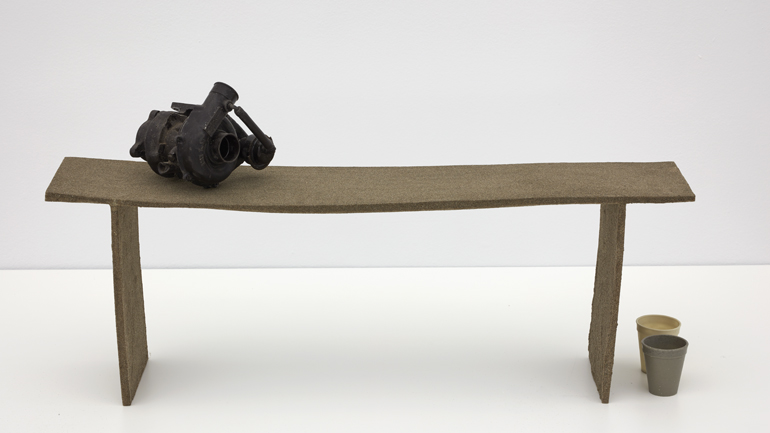
This exhibition brings together sculptures by contemporary artists and casts from the collection of the Faculty of Fine Arts of Lisbon, analysing the relevance of the casting technique in current artistic practices and exploring its infinite possibilities.
This exhibition brings together works by 18 contemporary artists and casts from the collection of the Faculty of Fine Arts of Lisbon. It takes a close look at casting, and the role it plays not only in sculpture, but also in many aspects of the everyday world.
Casting has been a way to make copies from other artworks, from life, from nature, from buildings, in the past and in the present. Casting in plaster still happens, but the exhibition has many more modern technologies on show, including 3D printing.
These various methods, and materials, all remind us that sculpture is rarely unique, and more often multiple. Casts are used to preserve special things and catch special moments that are about to change – children growing up, the face of the deceased, an important building – but are also used for everyday forms, such as domestic objects and homes.
Casts have long had an important documentary and especially medical function, and here the anatomy studio lies in between medicine and art as a space of learning.
Alongside the historic casts we show works by David Bestué, Christine Borland, Marie José Burki, Steven Claydon, Michael Dean, Aleksandra Domanović, Asta Gröting, Simon Fujiwara, Oliver Laric, Jumana Manna, Jean-Luc Moulène, Charlotte Moth, Rogério Taveira, Francisco Tropa, Xavier Veilhan, Marion Verboom, Daphne Wright and Heimo Zobernig.
These artists have been chosen because they are fascinated by casting, and what it allows them to do. The exhibition is multi-layered, with no fixed narrative. Instead viewers will find endless links between old and new, centreing above all on the concepts of reproduction, variation, seriality, scale and commemoration.
Before travelling to Lisbon, this exhibition is on display at the Beaux-Arts de Paris until 16 February 2020, bringing together the contemporary works with the French historic plasters, in a setting that is redolent of the role of the plaster cast and its place in artistic learning.
This project is an opportunity to make available to the public collections from art schools that have aroused growing interest among researchers and contemporary artists, but have until now been almost entirely hidden from the public gaze. Head curator: Penelope Curtis
Calouste Museum. Av. de Berna 45A, 1067-001 Lisbon
Image: Davd Bestué. Motor de sangre sobre banco de arena y vasos de hueso y mármol, 2017.
